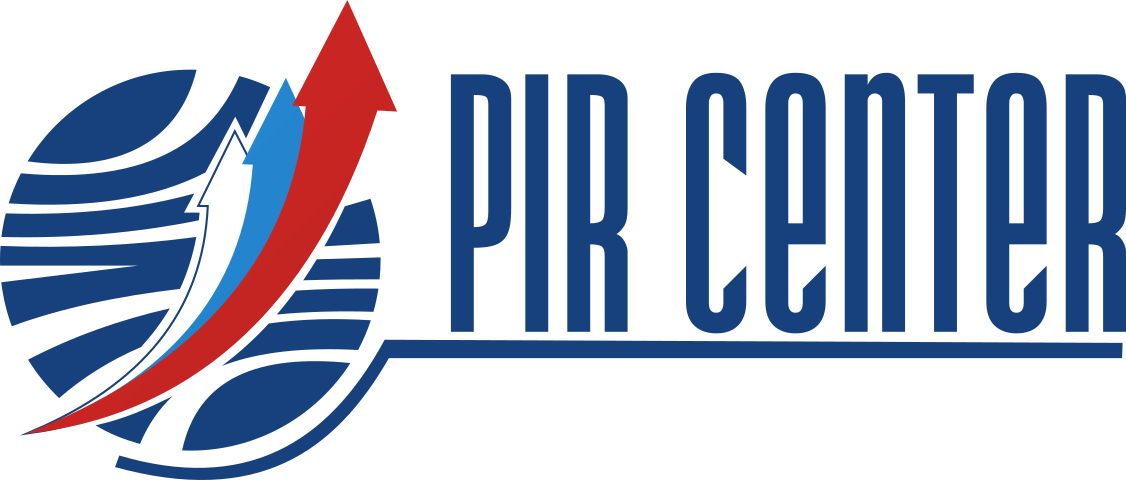Exclusive Interview
Currently, an entangled security crisis is unfolding in the states of the Sahel region, caused by both presence and widespread of armed groupings on the whole territory of the region. This crisis had originated in Mali’s North, then central regions of Mali have been swamped by this crisis, and crisis insensibly has spread to both North and West of Burkina Faso posing a threat to the stability of other neighboring states. Amid the situation in Sahel, PIR Center interviewed Mr. Hubert Foy, Director of the African Center for Science and International Security (AFRCSIS).
During the interview, issues of regional security, development of atomics in the African countries, activization of the terrorist groupings in the Sahel region, as well as further fostering the investment climate in region have been deliberated.
Interview was conducted by Alexandra Zubenko, Consultant at PIR Center.
Alexandra Zubenko: Has the image of Russia changed in African countries since the start of the special military operation in Ukraine?
Hubert Foy: In my view, numerous people in Africa see Russia as a familiar partner. A few African governments have even moved closer to Moscow. It is partly because of long-standing ties, lingering doubts about Western influence, and Russia’s strong messaging across the continent.
There is also an history underpinning to Russia’s image in Africa. The Soviet Union backed several African nations during their struggles for independence—Angola, Mozambique, and South Africa among them. That legacy still holds weight today. Lately, Moscow has deepened its ties with African governments. RT and Sputnik, both backed by the Russian state, have been expanding their reach across Africa.
Alexandra Zubenko: How would you assess the current security situation in the Sahel region, particularly following the withdrawal of French troops from Sahel?
Hubert Foy: The Sahel — home to Burkina Faso, Mali, and Niger — is facing serious challenges. Terrorist groups like the Islamis State in the Greater Sahara (ISGS) and Jama’a Nusrat ul-Islam wa al-Muslimin (JNIM)* have taken advantage of the power vacuum left behind when French forces withdrew. One deadly attack in Niger this past March underscored just how dangerous the situation remains.
To respond, the three countries formed a new partnership called the Alliance of Sahel States. Whether it can make a real difference, though, is still up in the air.
Nuclear security is another concern. Niger holds large uranium reserves that are critical for global energy needs. But with growing instability, there’s a real fear that these materials could fall into the wrong hands. At the same time, Russia’s state nuclear firm, Rosatom, is expanding across Africa, striking energy deals—including with countries in the Sahel. That raises new questions about influence and safety.
Meanwhile, major powers are stepping in. Russia is backing some countries with military support and energy projects. China is investing in roads and infrastructure. The United States is rethinking how it engages with the region.
What happens in the Sahel does not stay there. Instability could ripple outward—fueling extremism, forcing migration, and threatening the security of critical nuclear materials. The world should be paying attention.
Alexandra Zubenko: In your view, what is the present level of the terrorist threat in the region, and how is addressing these challenges both domestically and in collaboration with regional partners?
Hubert Foy: The Sahel—home to Burkina Faso, Mali, and Niger—is going through a tough stretch. These countries are now some of the hardest hit by terrorism worldwide. Attacks by groups like ISGS and JNIM in the past two years have only made things worse.
In response, they formed a joint effort called the Alliance of Sahel States (AES). It includes a 5,000-strong military force aimed at tackling extremist threats together.
Each country has also stepped up its own military efforts. However, these crackdowns have drawn criticism. Reports of human rights abuses and media suppression are raising red flags within and outside the region.
The international picture has changed, too. With French forces pulling out and support from groups like the G5 Sahel and ECOWAS fading, these countries are seeking new allies. Russia has become one of the top options.
Still, progress is slow. Limited funding, poor coordination, and growing mistrust are making things harder. The region is trying to reset its approach, but the way forward remains uncertain.
Alexandra Zubenko: How would you assess the role of the Alliance of Sahel States in combating terrorism and fostering regional stability?
Hubert Foy: In 2023, Burkina Faso, Mali, and Niger teamed up to push back against rising terrorist violence. They formed the Alliance of Sahel States (AES) and deployed a 5,000-strong joint force to tackle the problem head-on. Intelligence-sharing became part of the plan too. Still, deadly attacks keep happening, and many wonder if the alliance is doing enough —especially after the group cut ties with ECOWAS in 2025.
So, what is not working?
- Coordination gaps. Without ECOWAS in the picture, it’s been harder for the three countries to connect with regional partners. That’s slowed down momentum and left some gaps in support.
- Terrorist cash keeps flowing. Groups like JNIM and ISGS are still raising money—through smuggling, ransoms, and shadow economies. Loose borders and limited patrols make it hard to choke off those funds.
- Weapons oversight is weak. Arms and equipment, including drones, are slipping through the cracks. And when drones are used in attacks that harm civilians, public trust takes another hit.
- The bottom line: The threat isn’t going away. If the Sahel’s going to turn a corner, its leaders need tighter cooperation, better policing of weapons and money, and a lot more trust-building — at home and with neighbors.
Now the uranium exrtraction and production in Sahel is exercised only by Niger. Although security situation heightens the risks connected to uranium production, do you think these countries have perspectives of opening to international investments in the future?
Niger has long played a big role in supplying uranium—about 5% of the world’s total in 2022. But lately, growing unrest and political trouble have disrupted mining operations. That has some turning their attention to Mali.
Still, Mali isn’t an easy alternative. Since the military coups in 2020 and 2021, the rules around mining have shifted. The government has rewritten deals, hit companies with surprise tax bills, and even taken control of some sites. Unsurprisingly, investors are uneasy.
Security is another issue. Armed groups are active, and violence in certain regions is common. These threats have already forced companies like Barrick Gold to scale back or shut down some operations.
Mali has started working more closely with Russia. In 2024, it signed a lithium mining deal with a Russian firm. It signals a willingness to attract foreign partners — but also shows how much harder it has become for Western companies to stay in the game. Nearby, Burkina Faso has also tightened its grip on foreign mining projects.
In short, while Mali may look promising on paper, the mix of instability, security risks, and political shifts still makes uranium investment a risky bet.
Alexandra Zubenko: Do you think that currently interest to other applications of peaceful use of atom is in general higher that to nuclear energy in African countries? What, in your view, are the most prospective areas of the peaceful use to develop in Sahel?
Hubert Foy: Burkina Faso, Mali, and Niger are teaming up to tackle tough everyday problems — like not having enough food, clean water, or access to medical care. One of the tools they are turning to? Peaceful nuclear technology.
In farming, these techniques are already showing results. They are helping improve soil, grow more crops, and raise stronger livestock. In places like Burkina Faso, it is starting to change how people grow and produce food.
When it comes to water, nuclear tools are being used to track and manage supplies more efficiently — a big deal in regions where water is scarce.
These countries are not just looking for quick fixes. They want to train their own experts so they can take the lead long term. With help from the International Atomic Energy Agency (IAEA), local teams are learning how to use and manage these technologies on their own.
They have also started working with Russia’s Rosatom, signing new deals focused on using nuclear science in agriculture and health. It is a clear sign that these countries are investing in technology to solve real problems—and aiming to become leaders in innovation across Africa.
* Terrorist organizations banned in the RF
Key words: International Security; Africa; Sahel; Nuclear Energy
AFR
F13/AST – 25/04/11



